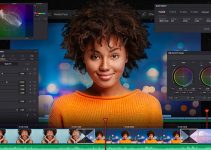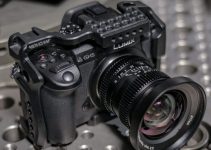When it comes to multi-cam setups, probably the most significant challenge video editors and colorists face in post is the pesky task of matching the colors and appearance of each camera. This is especially true when the setup consists of cameras of different brands and models, which means differing image properties due to the various sensor technologies and color sciences associated with each device.
While it usually takes а considerable amount of time and effort to match the cameras, it’s not an impossible task. In fact, seasoned filmmaker Tom Antos shows off a practical workflow to match multiple cameras together using two essential items – a physical color chart and a piece of software called 3D LUT Creator.
When it comes to shooting your footage on such an occasion, there are two things to keep in mind. First and foremost, even though you may have different camera models, it’s important to try to get the image to look as close as possible in-camera. This means matching exposure, ISO, and maybe even color profiles.
Secondly, when working with multiple cameras such as the Sony A6500, Panasonic GH4, and URSA Mini 4.6K, it’s highly recommended to use a color chart and then adjust the look of the overall image and standardize the coloring in you post-production pipeline. In this particular case, Antos uses both a DSC color chart and an X-Rite Color Checker Passport. The latter is his preferred color checker since it’s compact and easier to use inside of 3D LUT Creator.
To use the color chart, begin shooting your scene by putting the color chart of your choice directly in front of the camera (at a reasonable distance). Make sure to avoid any reflections or extreme shines of light on the chart so that the colors stay true.
Once you’ve shot all your footage, bring it into your video editor of choice. For the purposes of this tutorial, Tom Antos uses Premiere Pro CC and the powerful Lumetri Color panel. The next step of the process is exporting a still from each camera that shows the color chart in the frame and labeling the images accordingly.
To match the shots, you’ll need to create a LUT for each camera inside of 3D LUT Creator, which is another powerful color correction and grading tool for both stills and video. Once the program is opened, choose a still from one of the cameras and import it into 3D LUT Creator. From there, you can use a preset that corresponds to your color chart (such as the X-Right Color Checker Passport), although this is not the recommended option since it drastically changes the style of your image in comparison to the alternative – creating a custom chart.
To use the second method, in the color chart options of 3D LUT Creator, select Custom as this option will prompt you to input the number of columns and rows you want for the color chart. Enter the values according to the specs of the tool you opted for. Once you have done so, a grid will appear which you’ll need to drag and align with the color chart in your video. This is where the X-Right Color Checker Passport comes in handy since it has the colors perfectly aligned thus simplifying the process and saving time.
After you’ve adjusted the grid to your image, save the LUT and make sure to name it according to the camera it was shot on. Finally, hit Save and the software will automatically adjust the colors for you. Repeat this process for each of the cameras you’ve shot with.
Back inside of Premiere Pro CC, load the LUTs that correspond to the camera the clips were captured on. You’ll notice that the colors of each shot match almost perfectly. You may still find subtle differences in regards to dynamic range and sharpness depending on the camera sensor and color science you are using, but overall you should have achieved some decent results already.
All in all, with a little color card and a powerful piece of software, you could easily cut the time it takes to match the colors of multiple cameras by half, rather than simply eyeballing adjustments inside of your NLE. Although the equipment and software may cost a few pretty pennies, the time savings should justify the purchase and help you result in better matching videos.
[source: Tom Antos]
Order Links:
- Sony Alpha a6500 Mirrorless Digital Camera (B&H, Amazon US)
- Panasonic Lumix DMC-GH4 (B&H, Amazon US)
- Blackmagic Design URSA Mini 4.6K Digital Cinema Camera (EF-Mount) (B&H, Amazon US)
Disclaimer: As an Amazon Associate partner and participant in B&H and Adorama Affiliate programmes, we earn a small comission from each purchase made through the affiliate links listed above at no additional cost to you.




